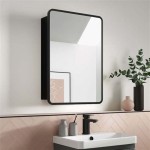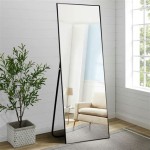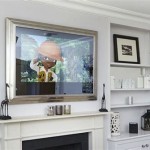Samsung Tablet Screen Mirroring to TV
Screen mirroring offers a convenient way to share content from a Samsung tablet onto a larger display, such as a television. This feature allows users to enjoy photos, videos, presentations, and even mobile games on a bigger screen, enhancing the viewing experience for a larger audience. Various methods facilitate this connection, employing either wired or wireless technology.
Wireless mirroring often utilizes technologies like Miracast or Smart View. Miracast establishes a direct Wi-Fi connection between the tablet and the TV, eliminating the need for a wireless router. Smart View, a Samsung-specific feature, connects to compatible Samsung Smart TVs, providing seamless integration and streamlined setup. However, compatibility is a key factor, and both the tablet and the TV must support the chosen mirroring technology.
Before attempting to mirror a screen, users should verify the compatibility of their devices. Consulting the user manuals for both the Samsung tablet and the television is recommended. These manuals typically specify supported mirroring technologies and provide instructions for enabling them. For older TVs that lack built-in mirroring capabilities, wireless display adapters can provide the necessary functionality.
Connecting a Samsung tablet to a TV wirelessly generally involves a few key steps. First, users need to enable screen mirroring on their tablet. This setting is commonly found within the display or connection settings menu, often labeled as "Screen Mirroring," "Smart View," or "Wireless Display." Next, the television should be switched to the appropriate input source for screen mirroring. This input is often labeled as "Screen mirroring" or a similar designation depending on the TV model. Finally, the tablet should detect and display a list of available devices. Selecting the television from this list initiates the connection. A pairing request may appear on the TV screen, which needs confirmation to establish the connection.
Troubleshooting wireless connection issues often involves checking the network connectivity. Ensuring both the tablet and the TV are connected to the same Wi-Fi network is crucial for methods relying on a router. Restarting both devices can sometimes resolve temporary glitches. Additionally, verifying that both devices have the latest software updates is essential for optimal performance and compatibility.
Wired connections offer a stable alternative to wireless methods, often preferred for activities requiring minimal latency, such as gaming. Using a USB-C to HDMI adapter is a common wired mirroring method. This involves connecting a USB-C cable to the tablet's USB-C port and an HDMI cable to the adapter's HDMI port. The other end of the HDMI cable is then connected to an HDMI port on the television. The TV's input source needs to be switched to the corresponding HDMI port to display the mirrored content.
Selecting the appropriate mirroring method depends on several factors, including the specific devices and user requirements. Wireless mirroring offers greater convenience and mobility, eliminating the need for cables. However, wired connections provide a more stable and lag-free experience, particularly beneficial for activities sensitive to delays, such as gaming. Ultimately, the optimal method depends on individual preferences and the intended use case.
Several factors can influence the quality of the mirrored display. Network congestion can introduce latency and reduce video quality in wireless connections. Using a 5GHz Wi-Fi network, if available, can often mitigate these issues. The distance between the tablet and the TV can also affect the signal strength and stability of wireless connections. For wired connections, the quality of the cables used can impact the performance. Using high-quality HDMI cables is recommended for optimal video and audio transmission.
Mirroring specific content from certain apps might sometimes require additional steps. Some apps have built-in cast icons that allow users to directly stream content to compatible devices. This feature might bypass the general screen mirroring functionality and offer a more streamlined experience for supported apps and services. Consulting individual app documentation or help resources can provide specific instructions for mirroring content from those applications.
Screen mirroring offers a powerful tool for sharing content from a Samsung tablet to a larger display. By understanding the different methods available, users can select the optimal approach based on their specific needs and available technology. Troubleshooting common issues and optimizing the connection contribute to a seamless and high-quality mirroring experience.

Display Your Galaxy Tablet On A Tv With Smart View Samsung Ca

Updated How To Screen Mirror Samsung Tablet Tv

6 Ultimate Ways To Screen Mirror Samsung Tablet 2024 Latest

How To Screen Mirror Samsung Tablet Tv Wirelessly 100 Free 2024

Samsung A7 Lite Smart View Community

Updated How To Screen Mirror Samsung Tablet Tv

How To Screen Mirror And Cast Samsung Galaxy Tab S7 More

How To Wirelessly Screen Mirror Samsung Tab On Smart Tv No App

Galaxy Tab A How To Screen Mirror Wirelessly Lg Smart Tv

Displaying Your Mobile Device Screen On The Tv Samsung Levant








